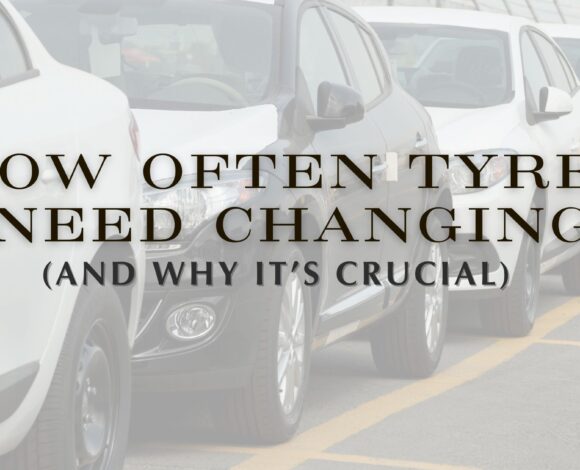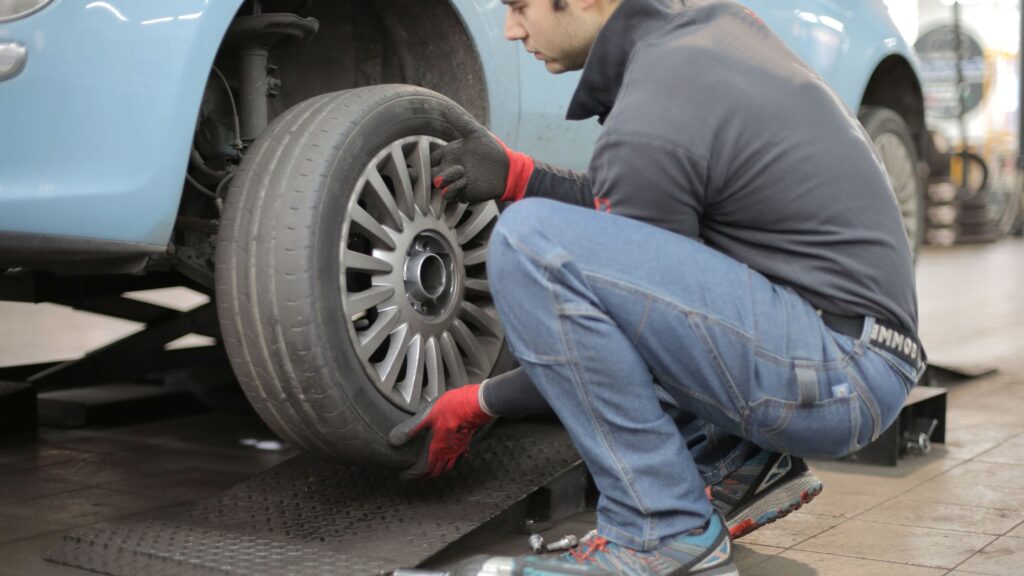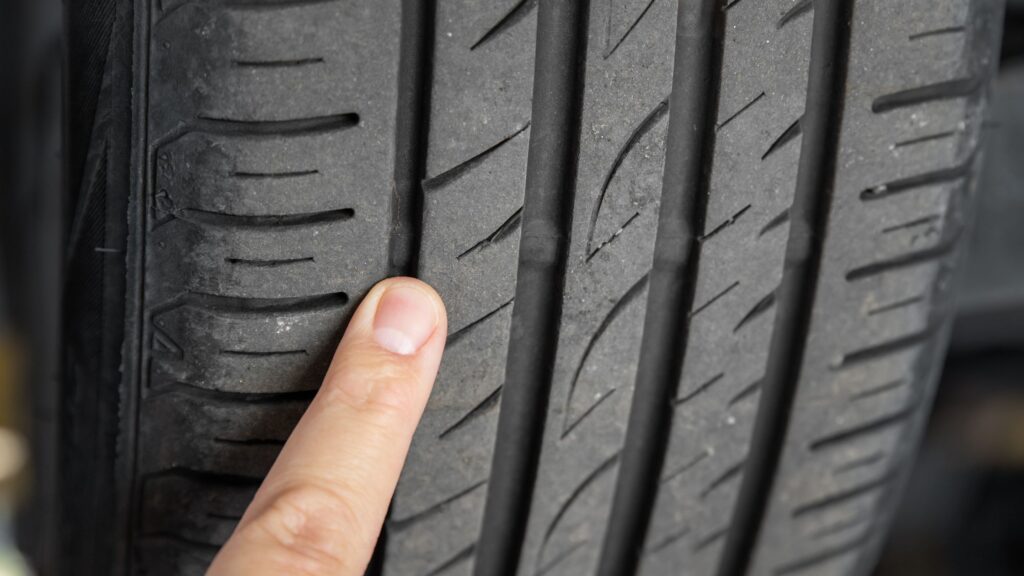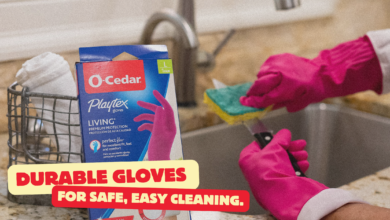How Often Tyres Need Changing (And Why It’s Crucial)

Ever had your tyre give up on you in the middle of nowhere? One minute you’re cruising, the next you’re pulled over with hazard lights on, wondering when you last checked your tyres. It’s one of those situations that creeps up unexpectedly — and turns a normal day into a real headache.
Tyres are easy to forget, but they play a huge role in how your car handles, how safe you are, and how much you spend on fuel. Worn or ageing tyres affect braking, grip, and comfort — and they can lead to serious problems if ignored. That’s why services like Protyre make it easier to stay on top of tyre health with expert checks and recommendations.
The Quick Answer You’re Probably Looking For

Let’s get straight to it — how often should you actually change your tyres? If you’re hoping for a simple number, there is one. But like most car-related things, it depends on how and where you drive.
General Rule of Thumb
A good starting point is to change your tyres every 20,000 to 30,000 miles, or at least every five years, even if they look fine. Tyre rubber breaks down over time, and performance naturally declines with age — even if you don’t drive much. Think of it like a pair of running shoes. They might still look okay, but they lose their grip and support well before they fall apart.
To make things easier, Protyre offers tyre replacement advice based on mileage, age, and usage — and they’ll even inspect your tyres for free.
The five-year mark is often where issues start to show — reduced tread depth, cracking, and stiffness that can affect your car’s grip and stopping distance. Most manufacturers recommend a maximum lifespan of 10 years, but only if the tyres are in excellent condition and have been regularly inspected by a professional.
Exceptions to the Rule
Now, if your driving habits fall outside the “normal use” category, those timelines can shrink. For example:
- Heavy mileage drivers (delivery, long commutes) might hit the replacement point much sooner.
- Performance driving — quick acceleration, sharp turns, and high speeds — wears tyres faster.
- Poor road conditions — potholes, gravel, or unsealed surfaces — are harsh on tyre tread and structure.
- Even low-mileage cars aren’t immune. If your car sits unused for long periods, tyres can crack or flat-spot from inactivity and still need replacing.
Even low-mileage cars aren’t immune. If your car sits unused for long periods, tyres can crack or flat-spot from inactivity and still need replacing. You can always pop into Protyre for a no-obligation check if you’re unsure.
Why Timing Matters More Than You Think
It’s easy to put off tyre changes — especially when they still “look okay.” But worn-out tyres are more than just a maintenance issue. They affect every part of your driving experience, and waiting too long can put you, your passengers, and others on the road at serious risk.
Safety First
Tyres with low tread or old rubber don’t grip the road the way they should. That means longer stopping distances, especially when the road is wet. Worn tyres also increase the chance of hydroplaning. To stay safe, regular inspections at places like Protyre are a smart habit.
Worn tyres are also far more likely to skid or hydroplane in rainy conditions. With less tread depth to channel water away, your car can lose traction entirely, making it much harder to stay in control — particularly during emergency braking or sharp turns.
Legal Requirements in the UK
The UK has clear tyre safety laws that every driver needs to follow. Driving on tyres below the legal limit isn’t just dangerous — it can come with serious consequences.
- Minimum tread depth: 1.6mm (across the central ¾ of the tyre)
- Penalty for non-compliance: Up to £2,500 fine per tyre
- Licence points: 3 points per tyre with illegal tread
The team at Protyre knows UK tyre laws inside out. Their tyre safety checks help you avoid these costly penalties — and keep your vehicle road legal.
Signs It’s Time for a Change

You don’t need specialist tools or training to figure out when your tyres are ready to be replaced. In fact, a few simple visual and feel-based checks can tell you a lot. Knowing what to look (and listen) for can help you stay ahead of costly problems and avoid being caught off guard on the road.
1. The 20p Test
The 20p test is a quick and reliable way to check if your tread depth is within a safe range. Just take a 20p coin and insert it into the main tread grooves of your tyre. If the outer border of the coin remains visible, your tread is likely below 3mm — which means it’s time to start thinking about replacements. While the legal limit is 1.6mm, many experts recommend changing tyres once they get close to 3mm, especially for better grip in wet conditions. It’s worth checking all around the tyre, not just in one spot, to catch any uneven wear. Or, even better, let Protyre check the depth and condition for you — it’s free.
2. Cracks, Bulges, and Uneven Wear
Even before you feel anything unusual while driving, your tyres might already be showing visible signs of damage. Cracks along the sidewall suggest that the rubber is starting to degrade, which can happen with age or long exposure to sunlight. Bulges or blisters usually point to internal tyre damage — often from hitting potholes — and can quickly turn into a dangerous blowout. If you notice parts of the tyre looking more worn than others, that uneven wear could indicate alignment or suspension problems. These are not issues to ignore — they’re signs that your tyres (and possibly your car) need attention.
3. Vibration or Strange Noises
Sometimes, the first sign that something’s wrong isn’t what you see — it’s what you feel. If you notice unusual vibration through the steering wheel or a bumpy ride that wasn’t there before, it could mean the tyres are out of balance or wearing unevenly. Likewise, if your car starts making unfamiliar noises — like a steady humming or rhythmic thumping — it might be coming from the tyres. These symptoms may not always mean immediate danger, but they’re a strong cue to get your tyres checked by a professional. It’s better to act early than risk driving with hidden damage.
Factors That Affect Tyre Lifespan
Tyre life isn’t just measured in miles. The way you drive, where you drive, and even the tyres you choose can all influence how quickly they wear out. Being aware of these factors can help you get the most out of your tyres — and avoid replacing them sooner than necessary.
Driving Habits
Your everyday driving style plays a big part in how fast your tyres wear down. If you regularly speed, brake hard, or take corners too aggressively, you’re putting a lot of extra strain on the tyre surface. This type of driving leads to uneven tread wear, flat spots, and faster breakdown of the rubber. On the other hand, smooth acceleration, gentle braking, and taking corners carefully all contribute to a longer-lasting, more even tyre wear pattern. Protyre can advise based on your typical driving style.
Climate and Road Conditions
Where you drive — and what you drive through — matters more than most people think. Cold weather can make rubber stiff and brittle, reducing grip and making tyres more prone to cracking. Heat has the opposite effect, softening the rubber and wearing it down faster. Add in heavy rain, ice, or pothole-filled roads, and your tyres are working overtime just to keep you safe. Driving on rough or poorly maintained surfaces can also cause hidden internal damage that speeds up wear even if the tread looks fine.
Tyre Quality and Type
Not all tyres are built the same — and some are designed to last longer than others. A few key differences include:
- Premium tyres: Built with higher-quality rubber and better tread design; offer longer life and improved performance.
- Budget tyres: More affordable but typically wear faster and may struggle in extreme weather.
- Summer tyres: Great for dry, warm conditions but wear quickly in cold or wet climates.
- Winter tyres: Designed for snow and ice, but not ideal once temperatures rise.
- All-season tyres: Offer a balance, but may not outperform season-specific tyres in harsh conditions.
Choosing tyres that match both your climate and driving needs is one of the easiest ways to stretch their lifespan — and avoid unexpected replacements. Protyre stocks and fits all kinds of tyres to match your driving needs.
Pro Tips to Make Your Tyres Last Longer
Tyres aren’t cheap, so it makes sense to get as much life out of them as possible. A few simple habits — none of which require much time or money — can help your tyres last longer, perform better, and keep you safer on the road. Here’s how to make every mile count.
Rotate Regularly
Tyres don’t wear evenly. Front tyres usually wear faster than rear ones due to steering, braking, and weight distribution. That’s why rotating your tyres every 6,000 miles (or roughly every six months) is so important. By swapping their positions — front to back or diagonally — you even out the wear and extend their lifespan. Most garages will do this as part of a routine service, and Protyre offers tyre rotation services to help you get the most out of your tyres. It’s worth asking during your next visit to Protyre if it’s included in your scheduled maintenance.
Maintain Correct Tyre Pressure
Driving with the wrong tyre pressure — whether too low or too high — is one of the fastest ways to wear them out. Under-inflated tyres flex more and generate excess heat, while over-inflated ones lose traction and wear down the centre tread. Check your pressure at least once a month using a digital gauge or at a petrol station. The correct pressure is usually listed inside the driver’s door or in your car manual.
Regular Alignment and Balancing
If your car pulls to one side or your steering feels off, your wheels might be misaligned. Poor alignment causes uneven tread wear and makes handling less precise. Similarly, unbalanced tyres can lead to vibration and premature wear. Getting these checked during services or after hitting potholes can make a big difference in tyre health — and your driving experience.
When in Doubt, Get a Professional Opinion

Even if your tyres look fine at a glance, it’s not always easy to tell what’s going on beneath the surface. That’s why it’s smart to get a second opinion — especially if something doesn’t feel quite right while driving. You don’t need to wait until there’s a clear issue to ask for help.
Free Tyre Checks
Many trusted garages, including places like Protyre, offer free tyre inspections with no obligation. These quick check-ups can spot things you might miss — such as internal damage, uneven wear, or early signs of deterioration. Getting your tyres looked at by someone who knows what they’re doing takes just a few minutes and can save you a lot of hassle later. It’s a simple way to stay ahead of any potential problems.
Trust Your Instincts
If something feels different — a pull in the steering, a sudden vibration, or even a faint noise you haven’t noticed before — don’t ignore it. Your car gives subtle signs when something’s off, and tyres are often the cause. It’s always better to check early than to wait and risk a breakdown, or worse, a safety issue. A quick visit to a garage can bring peace of mind, and more often than not, confirm what you were already sensing.
CONCLUSION
Changing your tyres isn’t just about mileage or age — it’s about knowing what to look for and staying alert to small changes. Worn tread, unusual noises, or even a change in how your car feels can all signal it’s time for a replacement. Regular checks, like the 20p test and monthly pressure top-ups, can help you catch problems early and avoid unexpected issues down the line.
Simple habits like rotating your tyres, keeping them properly inflated, and checking alignment can make a big difference in how long they last. And when in doubt, a quick visit to a professional for a free check can save you from much bigger headaches. Your tyres are the only thing between you and the road — don’t take them for granted.



